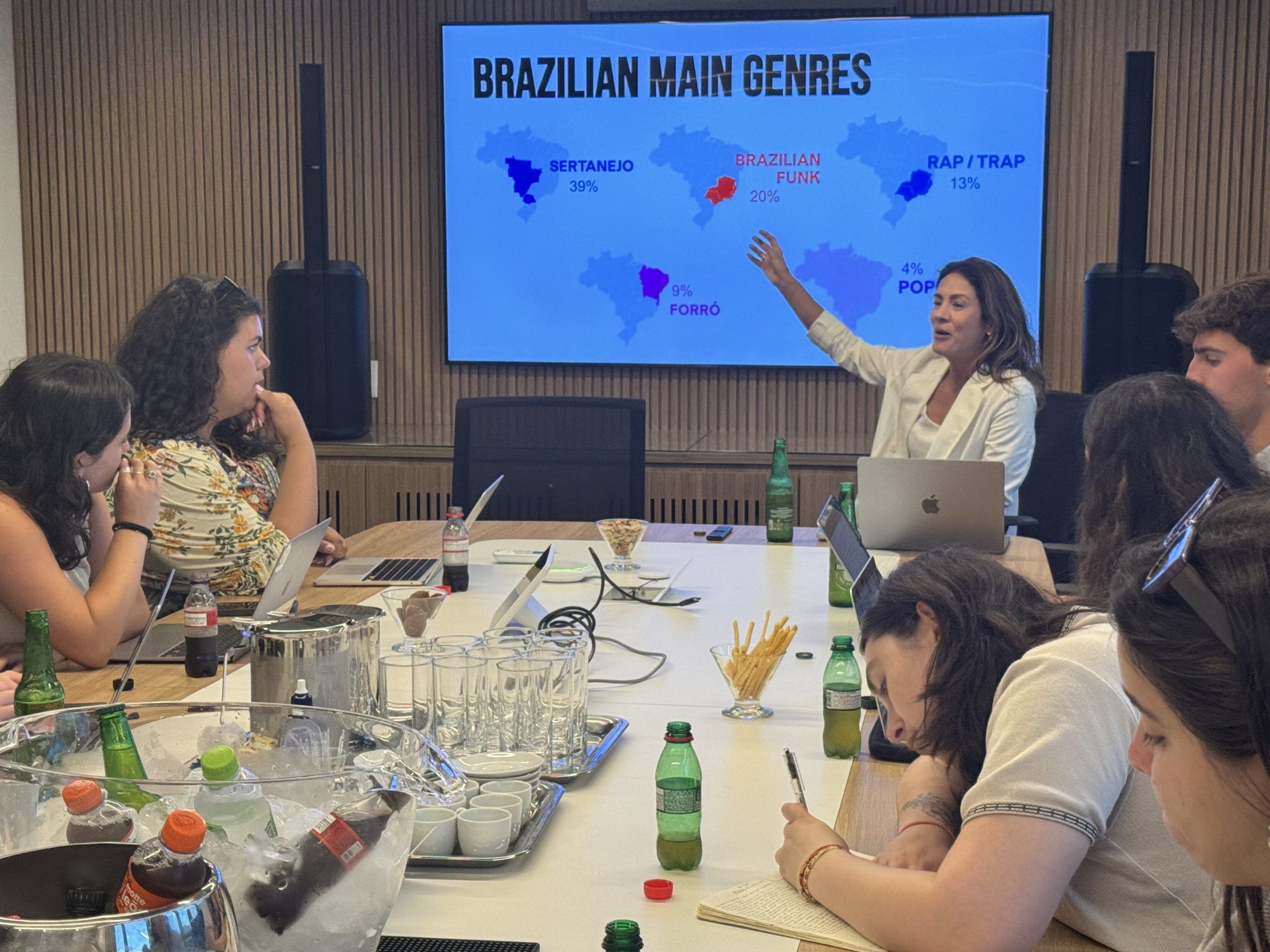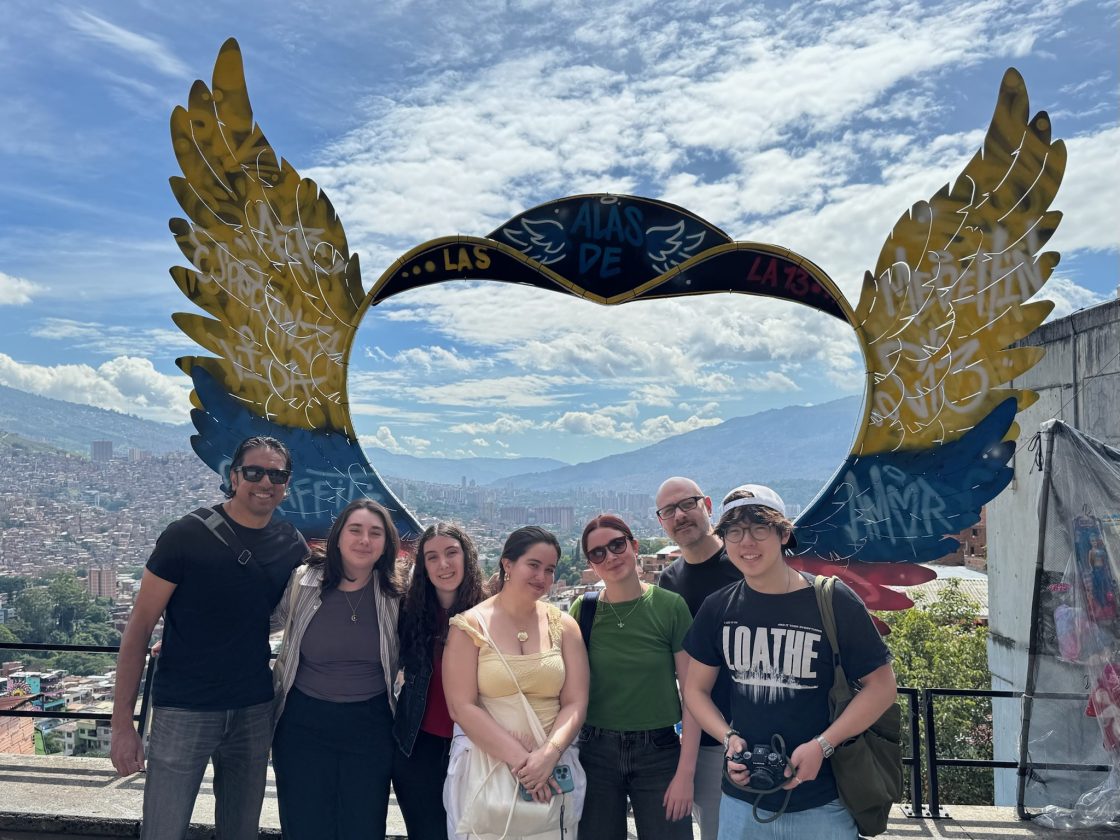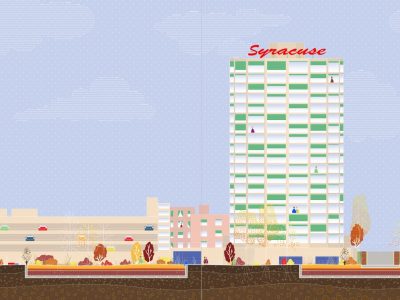Bandier Students Explore Latin America’s Music Industry
Thirteen students from the Bandier Program in the S.I. Newhouse School of Public Communications recently returned from a three-week journey through Latin America, where they explored the region’s dynamic and rapidly evolving music industry.
The immersive trip, led by Bandier Program Director Bill Werde and Imraan Farukhi, associate professor of television, radio and film, took students to Mexico City; Bogotá and Medellín, Colombia; and Rio de Janeiro and São Paulo, Brazil; and included more than 75 meetings with top executives from companies like Universal Music Group, Sony, Warner Music, Spotify, YouTube, Amazon and Live Nation.
The goal of the trip was to give students a firsthand look at how the global music business operates in emerging markets. “With music subscription growth leveling off in mature markets like the United States, there’s a massive push to grow new subscribers in regions like Latin America,” says Werde. “These trips are about immersing students in culturally rich hubs and provoking them to think about how to ethically engage these markets.”
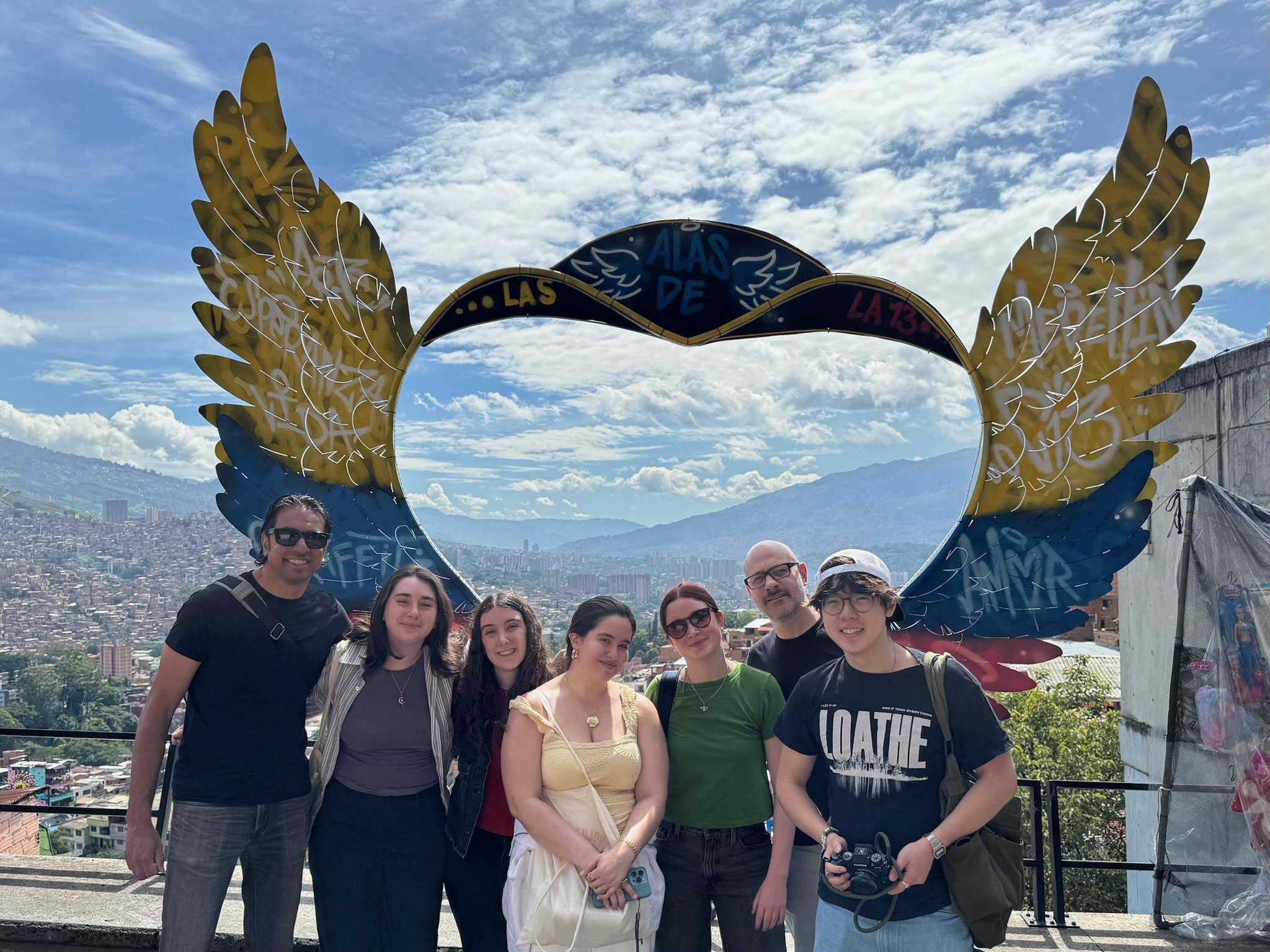
For Bandier student Emmett Milberg ’27, one of the most memorable moments came in Medellín, where the group visited Karol G’s label, Bichota Records. “We got to meet her team, tour the office and even visit her restaurant and nightclub,” he says. “It was incredible to see the machine behind one of the most prominent faces of this cultural shift. It really reinforced my love for Latin music and made me want to pursue a career that involves this region.”
Bria Lewis ’26, another student on the trip, was most impressed by a visit to Carlos Vives’ “Vives Universe” in Bogotá. “Carlos Vives himself gave us a tour, but what really stuck with me was the music school,” she says. “The kids performed for us, and we even got to play instruments with them. It reminded me that music is about culture, connection and creating moments that bring people together.”
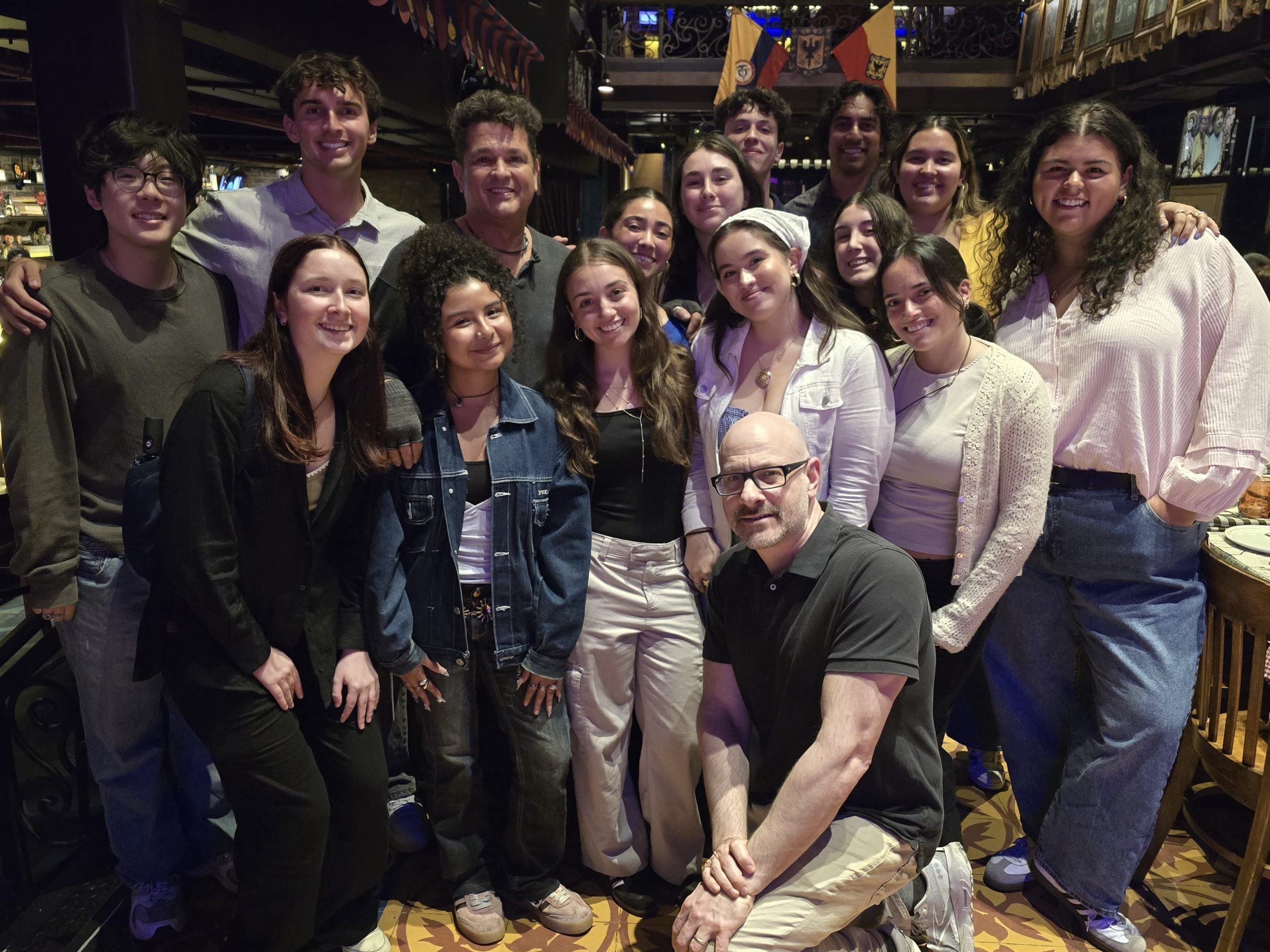
The trip also challenged students to think beyond a U.S.-centric view of the industry. “Artist development in Latin America often starts with culture and authenticity, not virality,” Lewis says. “Executives emphasized that identity isn’t just part of the strategy. It’s the foundation.”
Students also gained insight into the complexities of the Latin American market. Lewis noted the unique challenges artists face when trying to cross over between Spanish-speaking countries and Brazil, where Portuguese is the dominant language. “Each country has its own ecosystem and way of working,” Lewis says. “Success in one place doesn’t always translate to another.” Beyond the boardrooms and studios, students experienced the region’s rich cultural heritage, from the Teotihuacan pyramids in Mexico to the Christ the Redeemer landmark in Brazil. They also attended music festivals in Mexico and Brazil, and spent nights out at shows and clubs, gaining a deeper appreciation for the local music scenes.
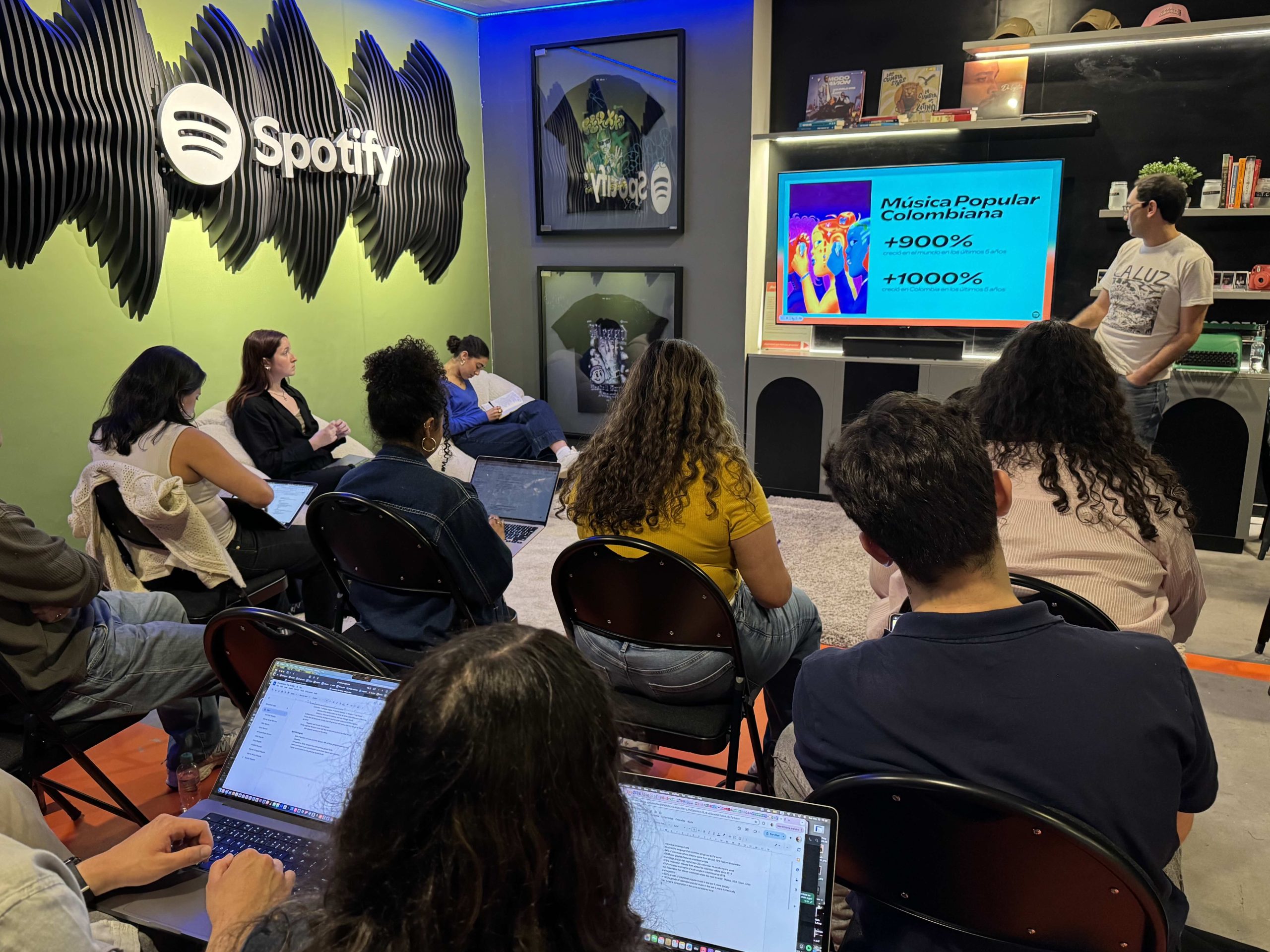
Werde emphasized that these experiences are as much about personal growth as professional development. “It’s incredible to see students’ confidence and resilience blossom during these excursions,” he says. “Some are traveling for the first time. Others are stepping far outside their comfort zones. But all of them return with a fuller, more accurate sense of the world and their place in it.”
